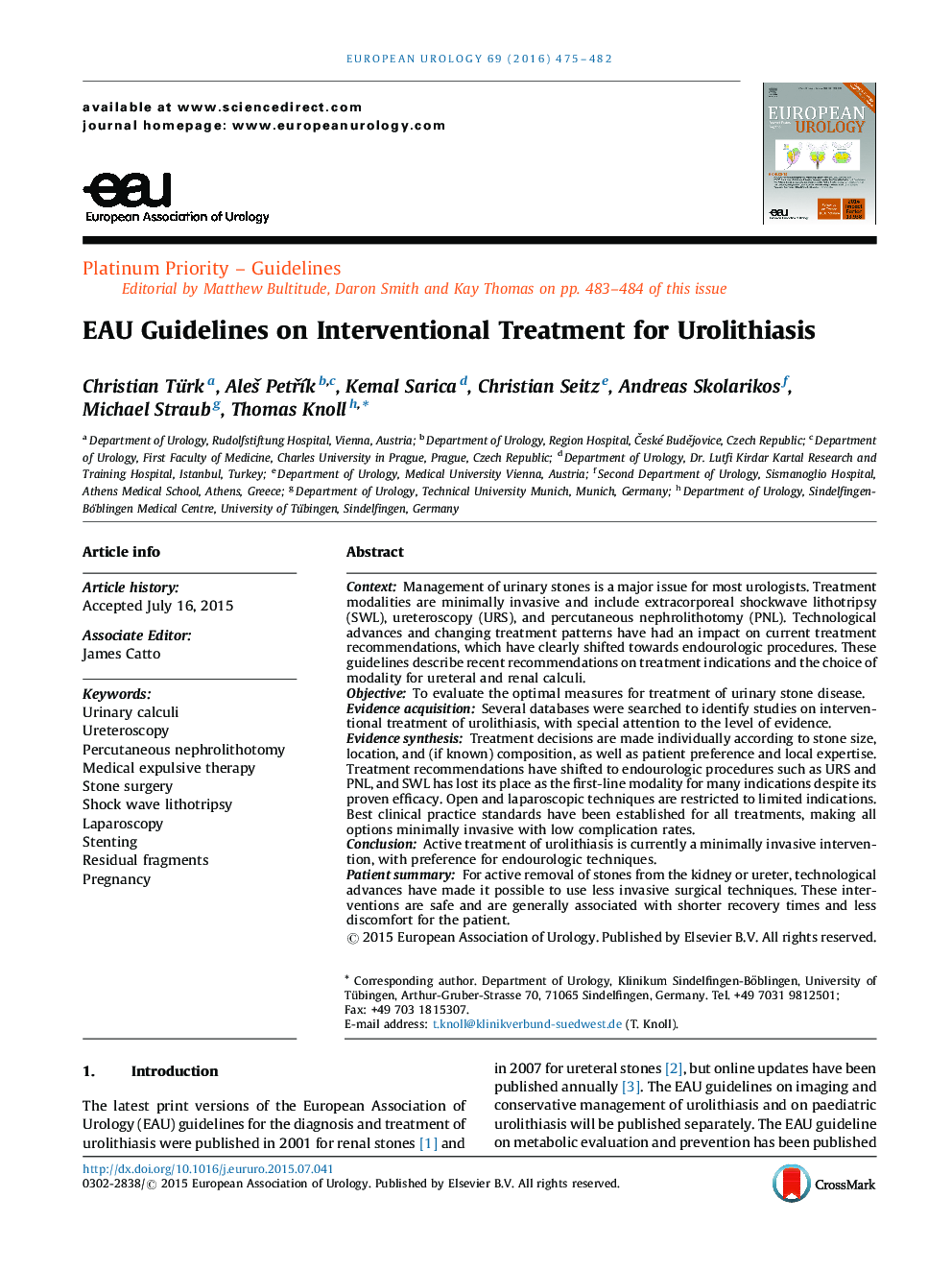| Article ID | Journal | Published Year | Pages | File Type |
|---|---|---|---|---|
| 6176360 | European Urology | 2016 | 8 Pages |
ContextManagement of urinary stones is a major issue for most urologists. Treatment modalities are minimally invasive and include extracorporeal shockwave lithotripsy (SWL), ureteroscopy (URS), and percutaneous nephrolithotomy (PNL). Technological advances and changing treatment patterns have had an impact on current treatment recommendations, which have clearly shifted towards endourologic procedures. These guidelines describe recent recommendations on treatment indications and the choice of modality for ureteral and renal calculi.ObjectiveTo evaluate the optimal measures for treatment of urinary stone disease.Evidence acquisitionSeveral databases were searched to identify studies on interventional treatment of urolithiasis, with special attention to the level of evidence.Evidence synthesisTreatment decisions are made individually according to stone size, location, and (if known) composition, as well as patient preference and local expertise. Treatment recommendations have shifted to endourologic procedures such as URS and PNL, and SWL has lost its place as the first-line modality for many indications despite its proven efficacy. Open and laparoscopic techniques are restricted to limited indications. Best clinical practice standards have been established for all treatments, making all options minimally invasive with low complication rates.ConclusionActive treatment of urolithiasis is currently a minimally invasive intervention, with preference for endourologic techniques.Patient summaryFor active removal of stones from the kidney or ureter, technological advances have made it possible to use less invasive surgical techniques. These interventions are safe and are generally associated with shorter recovery times and less discomfort for the patient.
